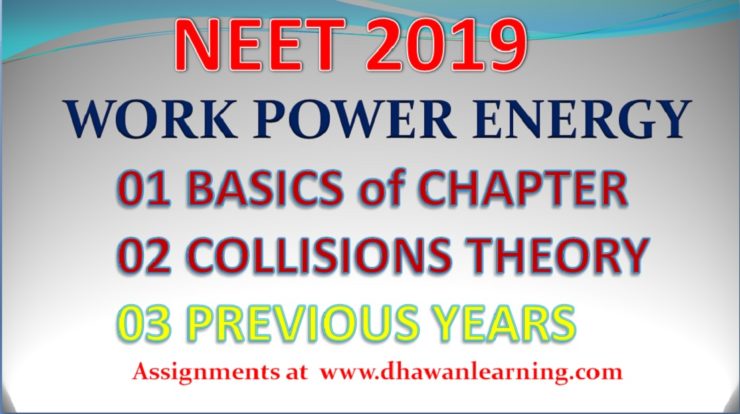
Welcome students !
We will discuss about the next chapter work power and energy. In this chapter you must try to understand work and energy are having the same dimensions, hence they can be easily converted. What we mean by work in physics, is that whenever any force is applied on a body and the body moves or we can say there is a displacement of the body the work is done. Work done is given by the dot product of force and displacement. Which will make it F.d.
Mathematically you know that F.d = Fd cos θ
You should understand that sign of work done will be positive or negative depending upon the sign of cos θ, If the angle between force and displacement is acute, work will be positive and the if angle between force and displacement is obtuse we get a negative work hence we must try to understand work is always defined by the force.
Here comes another word in picture, which is conservative and non conservative fields and forces. Now in conservative field or force the work done just depends upon initial and final position only and not on the path taken. While in non conservative fields work done depends on path taken as well. Gravitational, electrical and magnetic etc are conservative fields, while friction, viscous force and air drag etc are non conservative fields.

After work we talk about the energy. Energy is defined as the capacity to do work. Now to find out the energy try to find out how much work has been done on the body. And this work done will be stored as energy in the body. The energy of the body is of two types. First is called potential energy which is the energy body possesses due to its position shape or configuration. This energy can be utilised to do work. In this level of Physics we will take care of the potential energy in two forms.

The first one is potential energy due to gravity which we have been studying from previous classes as well and its formula is mgh.
The other type of potential energy which we study here is called spring potential energy and it mathematical formula is 1/2 kx2. where k is spring constant. This energy is stored whenever a spring is either compressed or elongated.
Next we talk of kinetic energy, it is the energy possessed by body by virtue of motion.
Here we will take care of translational motion only and energy as 1/2 mv2. While after the rotational chapter we will come across another energy termed as energy of rotation. Till we don’t reach that chapter we will confine our study restricted to translational kinetic energy.
Now talking about the last term in this chapter, that is power. Rate of doing work is termed as power.
Average power is defined as the total work divided by total time. while the instantaneous power can be mathematically written as F.v
And now we discuss the term collisions in this chapter
When two bodies are in contact for a very short interval of time (approaching zero) we call it a collision. As the time of contact is very small, the impulse transferred is zero and hence the momentum is conserved,
So in any type of collision the momentum is conserved.
But energy need not to be conserved. Based on the conservation of energy we define various collision.
COLLISION in ONE DIMENSION
ELASTIC COLLISION : In this type of collision the remains conserved. Here we must understand that the potential energy will NOT change (neither spring or gravitational energy). hence we can say the kinetic energy will remain conserved.
INELASTIC COLLISION : In this type of collision the energy is not conserved, again kinetic but potential remains conserved.
Practically all collisions are inelastic collisions but nearly inelastic is, collision of crazy ball with ground.
PERFECTLY inelastic collision : in such a collision the bodies STICK together after collision, in technical terms the velocity of both bodies is SAME
COLLISION in two dimensions: while we discussed previous paragraph with collision in ONE dimension only, but in two dimensions we have to take care that since MOMENTUM is a VECTOR quantity. We have to resolve momentum in components and equate in all components. This will fetch me certain more equations to solve the unknown variables.

Lastly we have discussed the previous year questions to gain the confidence.
DOWNLOAD HERE
